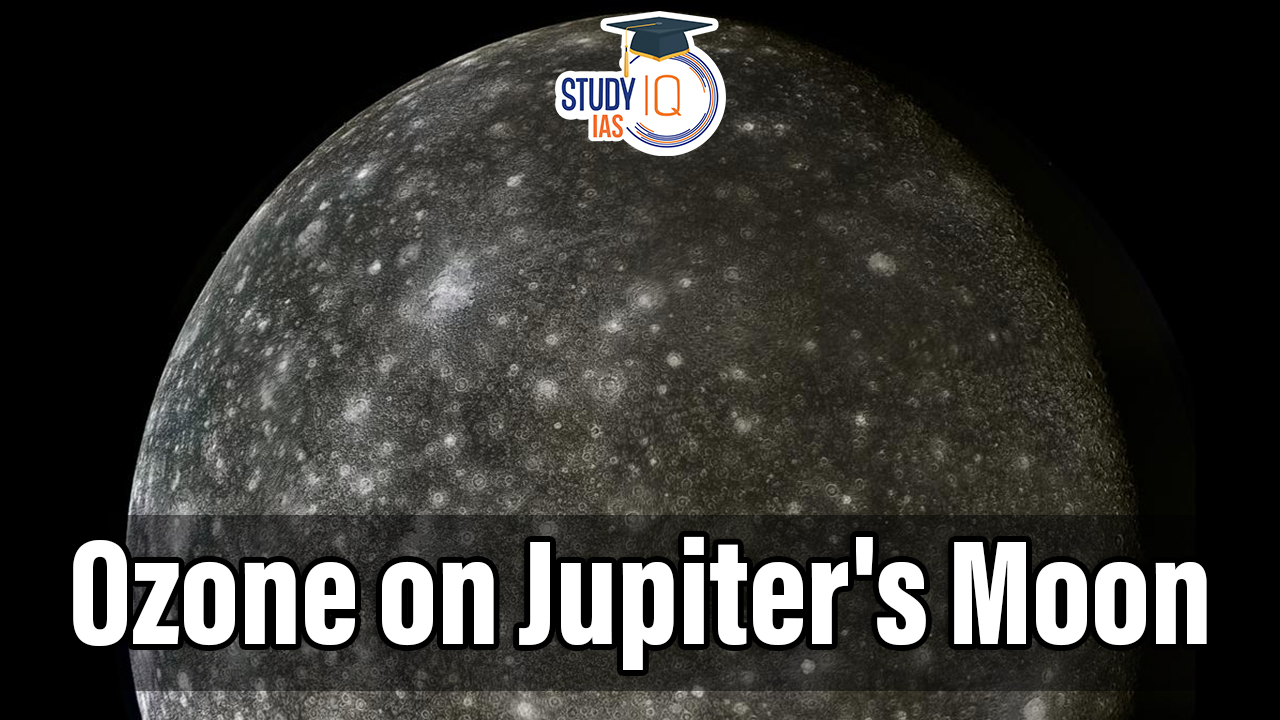Table of Contents
Context: Scientists from around the world, including India, published a study in the journal Icarus detailing the discovery of ozone on Jupiter’s moon Callisto. The research focused on recreating the chemical processes occurring on Callisto’s surface when exposed to sunlight, specifically investigating the formation of ozone from sulphur dioxide ice.
Importance of Ozone and Ultraviolet Radiation
- Ozone (O3) in Earth’s atmosphere shields us from harmful ultraviolet (UV) radiation, particularly ultraviolet-B (UV-B) and ultraviolet-C (UV-C) with wavelengths between 100-320 nanometers.
- UV radiation can damage DNA, increase mutation rates, and cause health problems in humans like skin cancer and cataracts.
- Finding ozone on celestial bodies suggests a more stable environment with the potential to support life.
Callisto’s Unique Characteristics
- Callisto, the third-largest moon in our solar system, is composed mainly of water ice, rock, sulphur dioxide, and organic materials.
- Its heavily cratered surface suggests a long and violent past but also geological stability, potentially preserving a subsurface ocean.
- The lack of extensive geological activity compared to other Jupiter moons like Io and Europa strengthens this theory.
Recreating Callisto’s Surface in the Lab
- Researchers from India’s Physical Research Laboratory used vacuum ultraviolet photons to mimic solar radiation on Callisto.
- Experiments were conducted at the National Synchrotron Radiation Research Centre (NSRRC) in Taiwan using high-energy radiation sources.
- Sulphur dioxide ice samples were deposited on a substrate mimicking Callisto’s surface conditions in a low-pressure chamber.
- The temperature of the ice samples ranged from 9 K (-264.15 degrees C) to 120 K to represent Callisto’s frigid environment.
We’re now on WhatsApp. Click to Join
Signs of Ozone and Potential for Life
- Analysis of the ultraviolet absorption spectrum revealed a distinct signature after irradiating the ice samples, confirming the formation of ozone.
- This finding aligns with Hubble Space Telescope data from 1997 suggesting the presence of sulphur dioxide and ozone on Callisto.
- The existence of ozone hints at the presence of oxygen, a crucial element for complex molecules like amino acids, which are the building blocks of life.
- This discovery raises questions about the potential habitability of Callisto and other icy moons in our solar system.
Unidentified Band and Future Implications
- The absorption spectrum also showed an unidentified band similar to one observed on Ganymede, another moon of Jupiter.
- This suggests a possible commonality in the surface composition or chemical processes on these moons.
- Further research on this unidentified band could provide valuable insights into the geological and atmospheric evolution of Callisto and Ganymede, potentially aiding our understanding of Jupiter’s moon formation.


 Utkal Divas 2025: Odisha Foundation Day ...
Utkal Divas 2025: Odisha Foundation Day ...
 NASA Parker Solar Probe Flies Closer to ...
NASA Parker Solar Probe Flies Closer to ...
 List of Military Exercises of India 2024...
List of Military Exercises of India 2024...





















